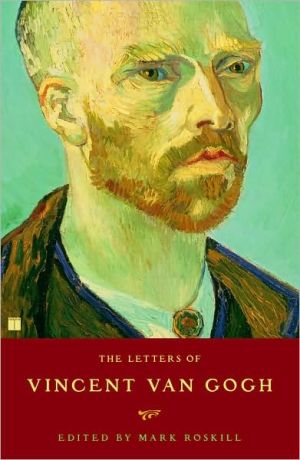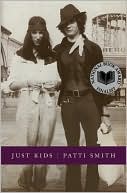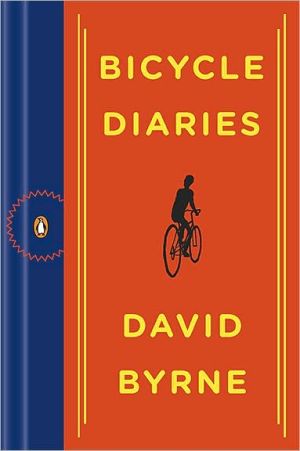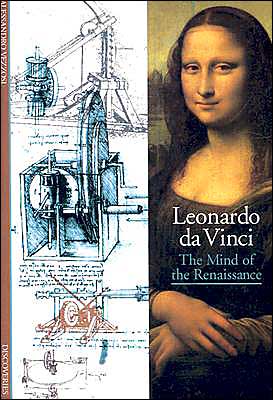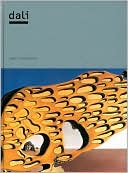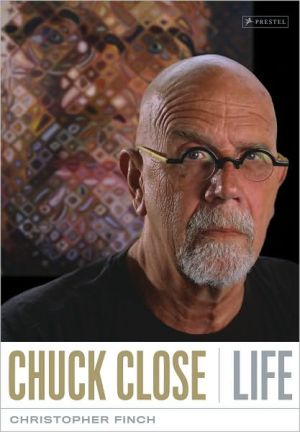The Letters of Vincent Van Gogh
A literary classic, The Letters of Vincent van Gogh Captures the voice of one of the most beloved and important artists of all time. \ Though Vincent van Gogh is often thought of as a mad genius, in The Letters of Vincent van Gogh the thoughtful, effervescent, and sensitive man is revealed to readers through his own voice.\ This collection of letters, arranged in chronological order and written to Vincent's closest confidant, his brother and art dealer, Theo, provide a riveting narrative of...
Search in google:
A literary classic, The Letters of Vincent van Gogh Captures the voice of one of the most beloved and important artists of all time. Though Vincent van Gogh is often thought of as a mad genius, in The Letters of Vincent van Gogh the thoughtful, effervescent, and sensitive man is revealed to readers through his own voice. This collection of letters, arranged in chronological order and written to Vincent's closest confidant, his brother and art dealer, Theo, provide a riveting narrative of van Gogh's life. The letters expose Vincent's creative process; his joy and inspiration derived from literature, Japanese art, and nature; as well as his many romantic disappointments and constant poverty. Also documented are Vincent's close relationships with fellow artists, especially Paul Gauguin. Van Gogh's tender and often ebullient letters provide a sharp contrast to the devastating and frequently violent mental breakdowns that plagued and eventually destroyed him. Collected and edited by art historian Mark Roskill, this volume also includes a chronology, a short memoir by van Gogh's sister-in-law that fills in many of the blanks of Vincent's early years, and reproductions of selected artwork discussed in van Gogh's letters. An epistolary classic, The Letters of Vincent van Gogh is not just an important historical collection but also a captivating treasure.Publishers WeeklyVan Gogh was 37 and on the edge of fame when, in 1890, he shot and killed himself. Unable to sell his brilliant canvases, he was utterly dependent upon his younger brother, Theo, to whom most of the letters collected here are written. Anguished by loss of faith after planning to be a priest, disappointed in several once-promising love affairs, he was also so tormented by poverty that one of his artistic breakthroughs occurred when, without proper colors, he brushed in "a garden, green by nature, but painted without actual green, nothing but Prussian blue and chrome yellow." Whether van Gogh's suicide was the inevitable culmination of depression, or due to epilepsy or to professional frustration (he is remembered, beyond his pictures, for razoring off part of his ear), his letters reveal that the end was long contemplated. In 1878, he had written to Theo, "It must be good to die in the knowledge that one has done some truthful work." By the time he put a hole in his chest, he knew he had done that. The letters, edited by de Leeuw, the director of the van Gogh Museum in Amsterdam, echo the artist's passionate voice, and the connective narrative excerpts other letters that readers may regret not having in full. Integral to the letters are 49 pen-and-ink sketches that evidence van Gogh's development into a creative force. Although each letter possesses an inherent pathos because one knows what lies ahead, van Gogh's epistolary appeal goes beyond melodrama. Often inspired by books despite being a limner of peasant life and the land, he once wrote, "How beautiful Shakespeare is, who else is as mysterious as he is; his language and method are like a brush trembling with excitement and ecstasy." (Sept.)
\ Publishers Weekly\ - Publisher's Weekly\ Van Gogh was 37 and on the edge of fame when, in 1890, he shot and killed himself. Unable to sell his brilliant canvases, he was utterly dependent upon his younger brother, Theo, to whom most of the letters collected here are written. Anguished by loss of faith after planning to be a priest, disappointed in several once-promising love affairs, he was also so tormented by poverty that one of his artistic breakthroughs occurred when, without proper colors, he brushed in "a garden, green by nature, but painted without actual green, nothing but Prussian blue and chrome yellow." Whether van Gogh's suicide was the inevitable culmination of depression, or due to epilepsy or to professional frustration (he is remembered, beyond his pictures, for razoring off part of his ear), his letters reveal that the end was long contemplated. In 1878, he had written to Theo, "It must be good to die in the knowledge that one has done some truthful work." By the time he put a hole in his chest, he knew he had done that. The letters, edited by de Leeuw, the director of the van Gogh Museum in Amsterdam, echo the artist's passionate voice, and the connective narrative excerpts other letters that readers may regret not having in full. Integral to the letters are 49 pen-and-ink sketches that evidence van Gogh's development into a creative force. Although each letter possesses an inherent pathos because one knows what lies ahead, van Gogh's epistolary appeal goes beyond melodrama. Often inspired by books despite being a limner of peasant life and the land, he once wrote, "How beautiful Shakespeare is, who else is as mysterious as he is; his language and method are like a brush trembling with excitement and ecstasy." (Sept.)\ \ \ \ \ Library JournalThis popular edition of selected Van Gogh letters is based on the expanded four-volume Dutch edition De Brieven van Vincent van Gogh (Van Gogh Museum and SDU, 1990). The translations read smoothly and are more elegant than those found in other editions. Covering an 18-year period, this selection of letters aims to capture the spirit of Van Gogh's life rather than offer up yet another chronicle of facts and opinions. Following the beginning section of early letters, sections are organized chronologically by the geographic locale where Van Gogh lived and worked. Editor De Leeuw provides thoughtful explanations that link many letters and introduce each section. Several reproductions of Van Gogh's drawings accompany appropriate letters. As is often the case with one-sided collections of correspondence, one often wishes that letters sent to Van Gogh were as readily available as his responses to them. For larger art collections.P. Steven Thomas, Illinois State Univ., Normal\ \ \ Kirkus ReviewsA new translation of van Gogh's ebullient letters (including some never before published), edited by the director of the Van Gogh Museum in Amsterdam, revealing the painter to be an intensely observant and passionate man, struggling to understand and overcome the episodes of mental illness that so damaged his life.\ To the average person, van Gogh is the apotheosis of the mad genius, but his letters, written between 1872 and 1890, mostly to his brother, Theo, tell a different story. To be sure, he found it difficult to submit to an office job. He refused to become a baker, as his sister suggested, or a preacher, which was his father's line of work. And although his letters are filled with conviction about painting, he felt guilty throughout his life for depending on Theo and periodically lapsed into despondency, worrying, as do many artists, that his labors might ultimately be futile: "At the moment I'm working on some plum trees, yellowy white, with thousands of black branches. I am using up an enormous amount of canvases and paints, but I hope it's not a waste of money for all that." Doubt was dispelled by his earnest love of nature and art. It's strange, nonetheless, to read a chipper description of an orchard, only to discover that a few days after the letter was written van Gogh was stalking his good friend Gauguin with a razor blade. Despite his efforts to keep working, the attacks increased in frequency and severity. One can sense the fear of imminent collapse gnawing away at his exuberance. Either in the grip of another episode, or fearing it, van Gogh committed suicide in July 1890. His heartbroken brother died less than a year later.\ The hardest thing for an artist, van Gogh noted in one letter, is to capture "the true and the essential." These letters reveal the extraordinary personal struggle that lay behind his triumphant ability to do so.\ \ \
